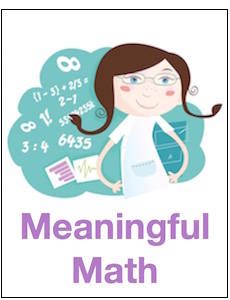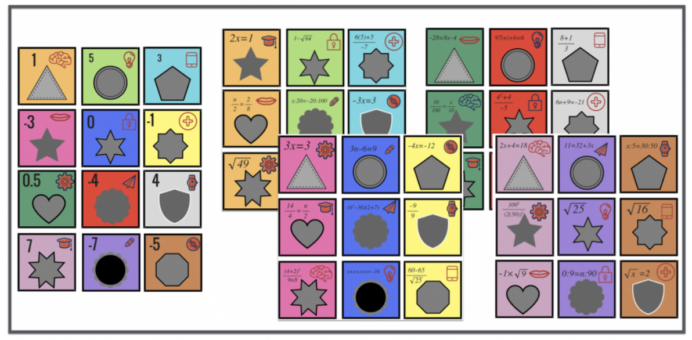Random Groups for Math Discovery and Practice
A MiddleWeb Blog
 Random grouping in math class has so many benefits: it gets students working with other students, it helps prevent students from being left out, and it encourages students to talk in math class.
Random grouping in math class has so many benefits: it gets students working with other students, it helps prevent students from being left out, and it encourages students to talk in math class.
But I have gotten so busy this year that I haven’t been randomly grouping my students.
I’ve learned that if I want to randomly group students I need to have structures in place that are easy and quick for me to implement. So, I’ve made it my goal to have several structures ready to go so that I can quickly put my students in random groups.
The evidence in favor of visibly random groups is provided by Peter Liljedahl, among others. One key point is that randomness helps students feel valued in a group setting – they don’t feel “selected” for reasons they don’t understand. If you would like to read more about this, I have included helpful pages from Powerful Learning and The Math Learning Center.
Ideally, I’d like to make visibly random groups at least once a week. I am going to share several different options for random student grouping here so I’ll have them in one place and readers can see what I’m up to and comment if you like.
Concept Reinforcement: Random Grouping of Pairs
I can’t resist trying to get some instruction in while grouping students. Here’s a method I’ve had good success with using homemade card-matching.
When we were studying the vertex form of quadratic functions, I made cards that had ordered pairs on half the cards, and that had quadratic functions in vertex form. To find their partner, students had to match their quadratic equation to the correct vertex. It was a good review and it quickly paired students. I just printed the cards out on regular typing paper and cut them apart. I didn’t laminate them, but I might later.


random grouping: perfect squares
random grouping: Linear Regression terms
Pre-Made Grouping Cards
Until I started doing research, I did not know there were so many resources online for free grouping cards. The Make Math Moments website provides free cards for teachers. You just provide your email and they will be sent directly to your inbox.
What I like about these cards specifically is that there are options for groups of 2 or groups of 3. Also, each card has different characteristics so that you can change things up. For example, one card has a number, a graduation hat, and a star. That gives you multiple options for grouping students.
I used these cards today, and it worked really well. It had been several weeks since I had done random grouping, and the whole energy in the classroom was different. As students walked in, I gave them a card and told them to find the desks with a graduation hat on them. It was that simple.
Students were working with different people, and more students were asking each other questions. There was one class that I was hesitant to use random groups. I thought there would be some personality conflicts or awkwardness, but it actually turned out really well. In fact, students worked better than they have in a while.
The prep time was about ten minutes including printing off the cards, and cutting and taping the master cards to my student desks (I made groups of three students). Again, I didn’t laminate them, but I probably will in the future. I just used the black and white version because my printer won’t print in color.
Is Random Grouping Worth the Time?
This week has reminded me that random grouping is worth the time. The environment was so much better, students were talking more with each other, and there was more work being done. I won’t do random grouping every day.
Some days my students need direct instruction, and I find that works better when students are not in groups. But on days when they are doing discovery activities or practicing concepts better suited to groups, I will definitely use one of the random grouping structures I mentioned above. If you use a different method for randomly grouping students, please share it in the comments!
Feature image: Make Math Moments





























